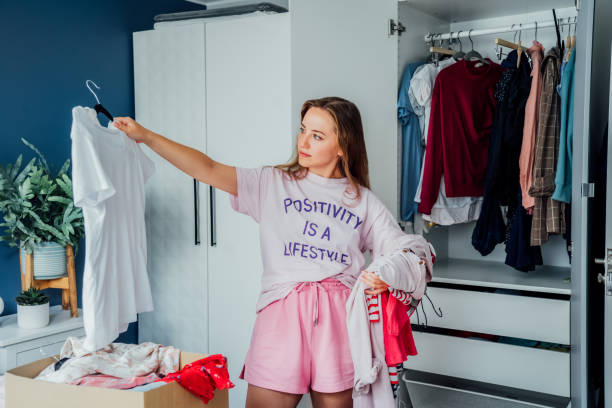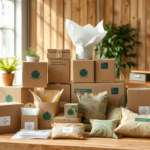Achieving a stylish and functional wardrobe does not require breaking the bank. In a world that constantly pushes for the latest trends and designer labels, it’s easy to believe that you need an expensive wardrobe to look fashionable and express your individuality. However, the truth is that with a little creativity, some smart shopping choices, and a focus on quality over quantity, you can build a wardrobe that serves your needs, reflects your personal style, and does not drain your finances.
1. The Value of Timeless Pieces
Investing in timeless, high-quality pieces can save you money in the long run. Classics like a tailored blazer, a white button-down shirt, or a little black dress rarely go out of style and can be mixed and matched with trendy accessories to keep your look fresh. Here are reasons why timeless pieces are vital:
- Lasting Style: They transcend the fast-paced trends that come and go with every season.
- Versatility: Timeless pieces can be dressed up or down for various occasions, maximizing their use.
- Cost-Per-Wear: When you invest in something that lasts for years, the cost per wear often justifies the initial outlay.
- Quality Over Quantity: Timeless items tend to boast better craftsmanship, hence outlasting cheaper, trend-driven pieces.
- Sustainability: By not indulging in fast fashion, you’re also making an eco-friendlier choice for the planet.
- Personal Branding: Timeless pieces can become a part of your signature style, contributing to your personal brand.
The Art of Smart Shopping
Smart shopping involves a strategic approach to building your wardrobe without unnecessary expenditure. This means knowing when to buy, where to shop, and what to look for. For one, end-of-season sales can be a boon, offering high-quality apparel at a fraction of the price. Thrift stores and consignment shops are also treasure troves for unique finds and gently used designer pieces at a steal. Additionally, consider the fabric and construction quality to ensure longevity. This smart shopping approach extends your wardrobe’s life, offering you style and sophistication without an extravagant price tag.
Beating the Trend Treadmill
Breaking free from the relentless cycle of fast fashion trends is not only good for your wallet but also for your sense of self and the environment. By choosing to invest in items that reflect your personal style rather than the transient trend of the moment, you avoid the trap of disposable fashion. Embrace the trend treadmill selectively—incorporate trendy items in small doses through accessories or seasonal pieces that don’t require significant investment. This way, the core of your wardrobe remains unaffected by the changing winds of fashion, and your style remains uniquely yours.

Embracing the Pre-Loved and Upcycled
The pre-loved market is booming, with second-hand and vintage items gaining popularity among those who wish to stand out without spending a lot. Upcycling old clothes either through DIY projects or by seeking out upcycled fashion from ethical brands also contributes to an original look without the hefty price tag. Opting for gently used pieces can breathe new life into your wardrobe—each item brings its own story and character, adding depth and uniqueness to your collection. You not only acquire one-of-a-kind pieces but also support sustainable practices by giving clothes a second chance.
Care and Maintenance: Preserving Your Wardrobe
The longevity of your wardrobe is as much about maintenance as it is about the quality of the items within it. Proper care—washing clothes according to their instructions, using garment bags, storing items correctly, and repairing them when necessary—can significantly extend the life of your clothes. Here are a few tips for maintaining your wardrobe:
- Read and follow the care labels on clothing to avoid damage during washing and drying.
- Invest in proper hangers and storage solutions to maintain the shape and quality of your garments.
- Learn basic repair skills, such as sewing on a button or mending a seam, to quickly fix minor issues.
- Rotate your clothes to ensure even wear and give each piece a rest.
- Consider investing in quality laundry products, which can be gentler on fabrics and preserve color.
- Handle stains immediately to avoid permanent damage to your garments.
Conclusion
Building a cost-effective yet stylish wardrobe is entirely achievable with a thoughtful approach that focuses on the long-term value of clothing. By investing in timeless pieces, becoming a smart shopper, steering clear of fast fashion’s fleeting allure, exploring the world of pre-loved clothing, and maintaining what you own, dressing well can be both economically and aesthetically rewarding. Your wardrobe should be a reflection of your personal style and ethics, not a financial burden—with the right mindset and actions, you can look fabulous without the luxury price tag.
FAQs
1. How can I determine if a piece of clothing is a timeless classic? – Timeless classics typically have a simple and elegant design, neutral colors, and are made of quality materials. They’re versatile enough to pair with various other pieces and remain relevant across different fashion seasons.
2. Are designer items worth the investment? – Designer items can be worth the investment if they are classic pieces that offer superior craftsmanship and longevity. However, it’s important to differentiate between paying for quality and merely for a brand name.
3. What is “cost-per-wear”? – “Cost-per-wear” is a calculation that evaluates the true value of an item by dividing its cost by the number of times you wear it. It illustrates how investing in a more expensive but durable item can be more economical over time compared to cheap, fast fashion that wears out quickly.
4. Where can I find quality second-hand clothing? – Quality second-hand clothing can often be found at thrift stores, consignment shops, online marketplaces like eBay or Depop, and specialized vintage stores.
5. Is learning to repair clothing really worth the time? – Learning basic repair skills not only saves money but also extends the life of your clothing, making it a sustainable practice that contributes to a more budget-friendly wardrobe management.





